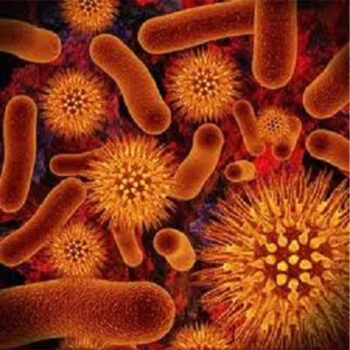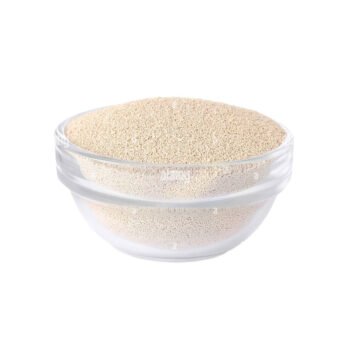ETHABLE-VMC
ETHABLE-VMC
(Antimicrobial is a dry formulation of certain antimicrobial strains along with dextrose, protease and starch (glucose) hydrolyzing enzymes)
Description:
Ethable-VMC, antimicrobial is a dry formulation of certain antimicrobial strains along with dextrose, protease and starch (glucose) hydrolyzing enzymes, which are soluble in ethanol and dispersible in water, specific for use in molasses & grain-based ethanol production
Properties:
Ethable-VMC is effective during emergency and regular maintenance conditions to control Grampositive bacterial infections, because of its superior stability at low pH and high temperature during fuel ethanol fermentation. It is much more stable at mash pH levels, as low as 3.0, in contrast to other antibiotics that start degrading rapidly at pH of 5.0. As a result of its stability Ethable-VMC is effective throughout the entire fermentation process. The degradation of Ethable-VMC is ultimately a function of time and temperature. DDGS dryers typically operate at temperatures as high as 800 ⁰F and will cause rapid breakdown of antimicrobial strains.
Lactic acid is an undesirable by-product of alcohol fermentation and can stop or seriously inhibit the metabolism of carbohydrates into alcohol by yeast. Lactic acid bacteria (such as Lactobacillus sp.) are the most common type of Gram-positive bacteria that produce lactic acid, consume sugar otherwise available for ethanol production and produce enzymes that affect the fermentation process.
How does Ethable-VMC Work:
Ethable-VMC kills and stops the multiplication of Gram-positive organisms like Lactobacillus.
During alcohol fermentation, these organisms produce lactic acid. Specifically, Ethable-VMC has a natural distribution of 2 molecules (M & S factors) that inhibit protein synthesis at two different ribosomal subunit locations in the bacterial cell, which prevents bacterial cells from multiplying (bacteriostasis) or to lyse (bacterial death-bactericidal).
Dosage
Ethable-VMC is added to fermenter during fermentation. Normal recommended dosage rates are between 1 ppm to 4 ppm (2 ppm is most common) dependent upon the level of bacteria present. Concentration is calculated using the ratio of 1 ppm equals 1 lb. in 108,000 gallons. Dosage should not exceed 4.0 ppm during the fermentation cycle. STORAGE
Boxes should be stored in a cool dry space. Product should be used within two years of its production date for best performance. Packages which have lost their vacuum seal should not be used. Opened packages can be stored cool and used within 3 to 4 days..
Packaging
100 Gram pouches into 20 kg drums or customized as per customer’s requirement.
Shelf Life
This product has a shelf life of 2 years from the date of packaging and must be stored in a dry location.





